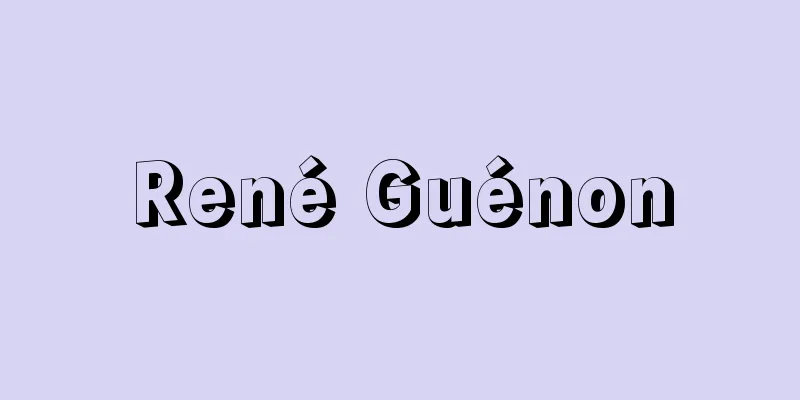Science education

|
A branch of school education that conveys cultural heritage and fosters creative abilities through natural sciences. [Kimura Yoshiyasu and Akiyama Mikio] historyThe term "rika" is considered to be a relatively new term that began to be used in Japan. The preface of "Kikaikanran" (translated in 1825, published in 1827), said to be the first physics book in Japan, has the phrase "Rika Kakubutsu no Ron" (Theory of Rika Study of Things), and the word "rika" also appears in "Seimi Kaisou" (published 1837-1847), translated by Udagawa Yoan. In this book, chemistry (meaning chemistry) is divided into six categories, and the term "rika semi" is used for the first category, which is the so-called basic principles of chemistry. "Ri" means "Chinese philosophy, the vessel of phenomena, and the essence of the universe" (Daigenkai), and "ka" means "each and every thing divided according to a certain standard," originally meaning the measurement of grains using a measuring bowl. In other words, it can be interpreted that the word "science" began to be used to mean a field that pursues the ultimate principles of things. Following the promulgation of the Elementary School Ordinance in April 1886 (Meiji 19), the name of the subject "Science" was used in the "Elementary School Subjects and Their Levels" enacted in May of the same year. However, its meaning was not explained at the time, but it was clarified in Article 8 of the Ministry Ordinance "Outline of Elementary School Curriculum" of November 1891 as follows: "The gist of science is to precisely observe ordinary natural objects and phenomena, to enable students to understand the gist of their relationships to one another and to life, and to cultivate a love for natural objects." This stated that science education was not only sufficient to provide students with the basics of various natural science subjects, but also that the relationship between human life and nature, and the protection of nature, were important issues. This character would define science education in Japan for a long time thereafter. [Kimura Yoshiyasu and Akiyama Mikio] TransitionScience education is inextricably linked to the development of science and technology and the views of science and education of the time, and its form is heavily influenced by national policies. Between 1917 and 1918, amid a global trend towards promoting science and technology after World War I, national subsidies were provided to encourage student experiments at junior high schools and normal schools and to improve experimental facilities. After World War II, the Science Education Promotion Act was enacted in 1953, and the subsidies provided by the national government to improve science education facilities and equipment in schools based on this act contributed greatly to the development of science education after the war. Science education in Japan, along with its systems, has been strongly influenced by educational thought in other countries. Developmentalist pedagogy, which has its origins in Pestalozziism and emphasizes the development of various human mental abilities such as observational skills, and the five-stage teaching method found in Herbartian pedagogy were both meticulously applied to science education, and the latter in particular changed form to become the basic framework of science teaching methods. The "New Education Movement" that was influenced by American progressive educational thought and developed in Japan from the Taisho period to the beginning of the Showa period produced many innovative attempts in science, such as discovery methods and spontaneous and creative learning methods, and showed a movement toward a comprehensive curriculum, but it did not become widely popular among the general public. After the Second World War, under the strong influence of the United States, teaching methods such as life unit learning and problem-solving learning were introduced, but they soon gave way to systematic learning, which advocated the systematization of teaching materials. After that, the global science education modernization movement that began in the United States in the 1960s had a major impact on the content and teaching methods of science education in Japan. Since the 1970s, the responsibility of science and technology in society has become strongly recognized. In the United States, the so-called STS (Science, Technology and Society) education movement, which aims to improve the scientific literacy of the general public, has become popular since the 1980s, and education based on a scientific view that takes into account the mutual relationship and activities of science, technology and society has been aimed for. STS education is also important in Japan. Since the 1990s, with the remarkable technological progress in science and medicine and the accelerating information society, the nature of science and science education has been questioned on a global scale. One of the main challenges of new science education is the approach in relation to bioethics and environmental ethics. Bioethical issues in gene analysis, diagnosis, treatment, and manipulation, artificial and in vitro fertilization, and organ transplants, as well as environmental ethics in coexistence with nature, are deeply connected to the formation of today's view of science. The relationship between environmental education, including bioethics, and science education, and between information education and science education in an information society, are extremely important educational issues that are urging reform. In Japan, as high school education becomes practically compulsory, the nature of science education as general education is becoming a major issue. In addition to understanding traditional scientific concepts, Japanese science education places emphasis on evaluating judgment and decision-making abilities in the problem-solving process, and a new view of academic ability is seen, which considers motivation, thinking ability, judgment, and expression to be the basis of academic ability. Furthermore, the aim is to be able to deal with a wide range of problems based on scientific knowledge. [Kimura Yoshiyasu and Akiyama Mikio] "Modern Science Education Series, edited by the Japan Society for Science Education, 6 volumes (1978, Toyokan Publishing)" ▽ "The Future of Science Education, edited by the Japan Society for Science Education (1998, Toyokan Publishing)" ▽ "Principles of Science Education, edited by Kimura Yoshiyasu (1973, Meiji Tosho Publishing)" ▽ "Lectures on Modern Science Education, edited by the School Science Research Group, 6 volumes (1986, Meiji Tosho Publishing)" ▽ "Development of the Revised High School Curriculum Guidelines (Science Edition), edited by Takahashi Keiichi, Yamagiwa Takashi, and Eda Minoru (1990, Meiji Tosho Publishing)" [Reference Items] | | | | | |Source: Shogakukan Encyclopedia Nipponica About Encyclopedia Nipponica Information | Legend |
|
学校教育の一分野で、自然科学を通して文化遺産を伝えるとともに、創造的能力を育てること。 [木村仁泰・秋山幹雄] 歴史「理科」という用語は、わが国において使い始められた比較的新しいものと考えられる。日本で最初の物理学書といわれている『気海観瀾(きかいかんらん)』(1825訳述、27刊)の序文に「理科格物之論」ということばがあり、また宇田川榕菴(ようあん)訳著の『舎密開宗(せいみかいそう)』(1837~47刊)にも「理科」ということばがみられる。このなかで、舎密(化学の意)を六門に分け、その第一門、いわゆる化学の基礎原理にあたる部分に「理科舎密」ということばをあてている。「理」は「支那(しな)哲学ニテ、現象ノ器ニ対シテ、宇宙ノ本体」(『大言海』)という意味で、「科」は、五穀を斗(ます)を用いて量り分かつことを本義とし、ひいては「一定の標準を立てて区分けした一つ一つ」を意味する語である。つまり、「理科」とは、物事の究極の原理を追究する部門といった意味で用いられ始めたと解釈できる。 教科の名称としての「理科」は、1886年(明治19)4月小学校令公布に続き、同年5月制定の「小学校ノ学科及其程度」において用いられた。しかしこのとき、その意味は示されなかったが、1891年11月の省令「小学校教則大綱」第8条で次のように明文化された。「理科ハ通常ノ天然物及現象ノ観察ヲ精密ニシ其(その)相互及人生ニ対スル関係ノ大要ヲ理会セシメ兼ネテ天然物ヲ愛スルノ心ヲ養フヲ以テ要旨トス」。これは、理科の教育が自然科学諸科学諸学科の基礎を児童・生徒に与えることをもって足りるとするだけでなく、人間の生活と自然の関係、自然の愛護を重要な課題とすることを表明するものであった。この性格はその後長くわが国の理科教育を規定するものとなった。 [木村仁泰・秋山幹雄] 変遷理科教育は、科学技術の発展およびその時代の科学観・教育観と密接不離な関係にあり、そのあり方は国の施策による影響が大きい。1917~18年にかけて、第一次世界大戦後の世界的な科学技術力推進の気運のなかにあって、中学校・師範学校の生徒実験の奨励と実験設備の充実のため国庫補助が行われた。また、第二次世界大戦後も、1953年(昭和28)「理科教育振興法」が制定され、これに基づき学校の理科教育施設や設備の充実のために国から支出された補助金が、戦後の理科教育の発展に大きく貢献した。 わが国の理科教育は、その制度とともに、諸外国の教育思潮の影響を強く受けてきた。ペスタロッチ主義に源流を求める観察力などの人間の精神的諸能力の開発を強調した開発主義教育法や、ヘルバルト主義教育学にみる五段階教授法が理科教育にも細密に適用され、とくに後者は形をかえ、理科指導法の基本的骨組みとなっていった。アメリカの進歩主義教育思想の影響を受け、大正から昭和の初めにかけてわが国に展開された「新教育運動」は、理科においても発見的方法、自発的・創造的学習方法などの数多くの革新的試みを生み、総合カリキュラムへの指向の動きを示したが、一般に広く普及するまでには至らなかった。 第二次世界大戦後は、アメリカの強い影響の下に、生活単元学習、問題解決学習などの指導法が導入されたが、やがて教材の系統化を主張した系統学習に席を譲った。その後、1960年代のアメリカに始まった世界的な科学教育現代化運動は、わが国の理科の教育内容や指導方法に大きな影響を与えた。70年代以後には科学と技術の社会における責任が強く認識されるようになった。アメリカでは、80年代から一般大衆の科学的素養の向上をねらいとした、いわゆるSTS(Science,Technology and Society)教育運動が盛んになり、科学―技術―社会の相互のかかわりと営みを視野に入れた科学観に基づく教育が目ざされた。STS教育は、日本でも重視されている。90年代以降、科学、医学等の著しい技術的進歩と加速する情報化社会のなか、世界的規模で科学・理科教育のあり方が問い直されている。新しい理科教育のおもな課題として、生命倫理、環境倫理とのかかわりのなかでの取組みがあげられる。遺伝子の分析・診断・治療・操作、人工・体外授精、臓器移植などがかかえる生命倫理の問題、自然と共生していくうえでの環境倫理の問題は、今日の科学観の形成に深くかかわってきている。生命倫理を含む環境教育と理科教育、情報化社会における情報教育と理科教育との関係は、きわめて重要な教育課題として改革を促している。日本では、実質的な高校の義務教育化が進むにあたり、一般教育としての理科教育のあり方が大きな問題となっている。日本の理科教育においては、従来の科学的概念の理解に加えて、問題解決過程における判断および意思決定能力の評価に重点が置かれ、意欲、思考力、判断力、表現力を学力の基本とする新しい学力観がみられる。さらに、科学的素養に基づいて、広く諸問題への対応ができることを目ざしている。 [木村仁泰・秋山幹雄] 『日本理科教育学会編『現代理科教育大系』全6巻(1978・東洋館出版社)』▽『日本理科教育学会編『これからの理科教育』(1998・東洋館出版社)』▽『木村仁泰編著『理科教育学原理』(1973・明治図書出版)』▽『学校理科研究会編『現代理科教育学講座』全6巻(1986・明治図書出版)』▽『高橋景一・山極隆・江田稔編『改訂高等学校学習指導要領の展開(理科編)』(1990・明治図書出版)』 [参照項目] | | | | | |出典 小学館 日本大百科全書(ニッポニカ)日本大百科全書(ニッポニカ)について 情報 | 凡例 |
<<: Department of Physical Medicine
Recommend
Ibrahim Pasha (Tulip Era)
…In Turkish, it is called Lāle devri, and refers ...
Red-footed booby
A seabird of the family Pelecanidae. It has a tot...
Wiener Schnitzel - Wienerschnitzel
...Fish dishes include smoked or pickled herring,...
Precipitation indicator
...The compounds shown in Table 3 emit different ...
Entertainment hall - Entertainment hall
〘 noun 〙 A venue for performing various arts. A pe...
Allelopathy
It is also called allelopathy or action at a dist...
The Arctic
The Arctic Circle is an area consisting of the oc...
Mount Maya - Mayasan
A mountain in the Rokko Mountains, located in the...
Kasegawa
A river that flows through the center of Saga Pre...
Haifa (English spelling)
A large port city in northwestern Israel facing th...
thon mi sam bhoṭa (English spelling) thonmisambhota
...In Tibetan, it is called bod yig (hereinafter,...
Basal conglomerate (basal conglomerate)
Conglomerates found directly above unconformities ...
glima
… [Europe] Europe tends to have the impression th...
Pressurized cabin
…So, most modern aircraft, except for simple ligh...
Natural history
In a broad sense, it is a science that studies th...




![Miyahara [town] - Miyahara](/upload/images/67ccf6b7a29fb.webp)




